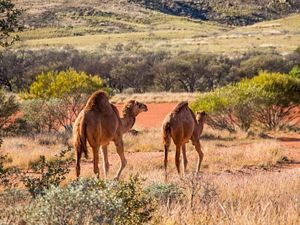Balancing Water in the Murray-Darling
We’re balancing agriculture, finance and the environment.
The Murray-Darling Basin is one of the world’s largest and most productive river basins, accounting for $19 billion of agricultural output and providing one third of Australia’s food supply. It harbours some of our most important natural assets, supporting a diverse array of animals, plants and ecosystems of national and international significance. This includes 35 endangered birds and 16 endangered mammals.
However, the Murray-Darling is also one of the most vulnerable river basins on Earth. Decades of engineering, over-allocation and the drying effect of climate change have significantly reduced runoff to rivers, creeks and wetlands within the basin. In a recent assessment of overall ecosystem health, more than 80 percent of the Murray-Darling Basin’s river valleys were rated as being in poor or very poor health based on assessments of fish, invertebrates and vegetation. The Basin’s ecosystems are suffering and as a result, many species that depend on the region’s natural flooding cycle face extinction.
To address these environmental concerns, we established the Murray-Darling Basin Balanced Water Fund to provide water security for farmers, while protecting culturally significant wetlands that support threatened species and ecosystems. The Fund invests in permanent water rights in the Southern Murray-Darling Basin and allocates those rights in a smart way. When water is abundant and agricultural demand is lower, more water will be made available to local wetlands. When water is scarce and agricultural demand is higher, more water will be made available to irrigation. This approach optimises agricultural and environmental outcomes by replicating the natural wetting and drying cycles of the Basin. It’s a win-win approach, aligning the interests of people and nature.
The Fund is a partnership between The Nature Conservancy, the Murray Darling Wetlands Working Group and Kilter Rural.
The Fund provides the following conservation outcomes:
- Improved waterbird and native fish habitats including breeding habitats
- Improved health for wetlands, floodplain forests and woodlands
- Sustainability of plant and fish refuges
- Increased wetland plant health and growth
In addition to environmental outcomes, the restoration of environmental flows will help to conserve sites of important Aboriginal cultural and spiritual value.
Visit our Australia website to learn more about The Nature Conservancy’s work in Australia.



